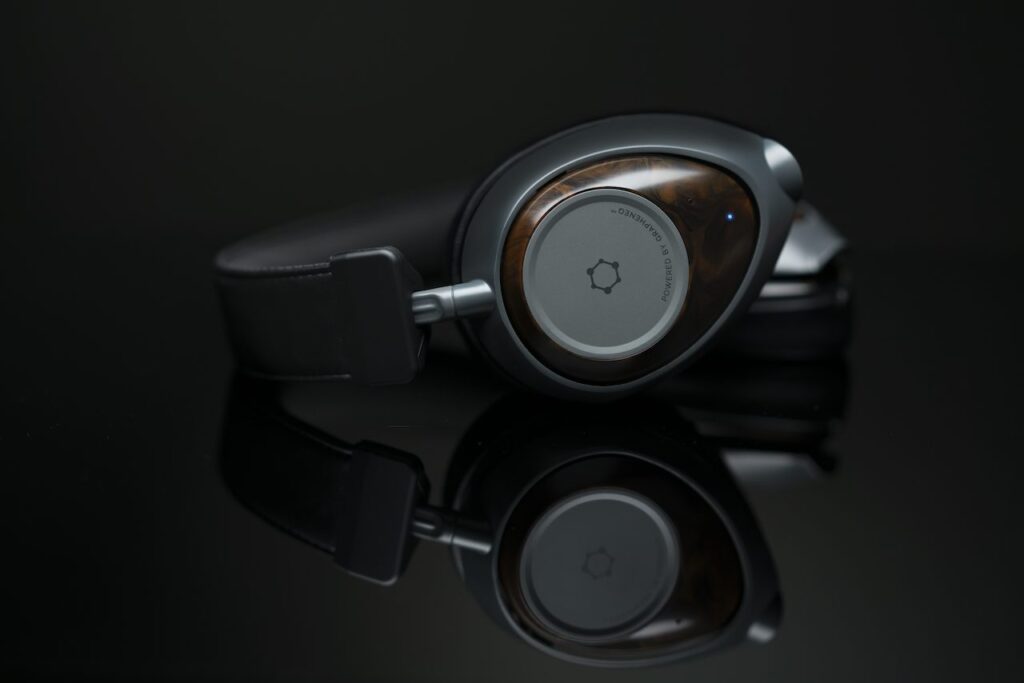& Construction

Integrated BIM tools, including Revit, AutoCAD, and Civil 3D
& Manufacturing

Professional CAD/CAM tools built on Inventor and AutoCAD
4 min read
Check out how the Ora Graphene Audio team uses Autodesk Fusion 360 to revolutionize the audio equipment industry.

Imagine a material so infinitesimally thin, composed of a mere single carbon atom in thickness — more of a suggestion of matter than anything perceptively solid. When seen under a microscope, this nearly “nothing there” material reveals itself as a tightly bound lattice of linked hexagons of carbon atoms, forming a two-dimensional honeycomb plane that looks remarkably like the world’s smallest chain link fence.
Yet this microscopic geometric gossamer gives the unique material a tensile strength many times stronger than steel while affording it surprising flexibility. It’s also extremely lightweight. If that wasn’t all wondrous enough, the magic material is also transparent and conductive electrically and thermally.
This novel combination of properties makes graphene seem like the stuff of science fiction. In reality, however, it’s on the cusp of transforming numerous industries, including applications in the biomedical industry, energy technologies, sporting goods design, water purification solutions, and in the case of Ora Graphene Audio, revolutionizing audio products.
Graphene audio loudspeakers and headphones are already touted for their distortion-free performance and efficiency. They’re typically marketed toward first-adopter audiophiles, but Ora Graphene Audio co-founder and VP of Business Development Ari Pinkas, alongside Engineering Manager Felix Cournoyer, warns these products typically contain insignificant amounts of the material to benefit in performance.
“You have to be careful about any graphene speaker marketed today,” says Pinkas, “When we looked closer at these products, we noticed they were just applying a graphene coating onto the surface of an old existing paper driver.”
The hyperbole versus the sobering reality surrounding graphene is attributed to the low yields and small sizes that have hindered the production of high-quality graphene at scale. Simply put, graphene has proven very difficult to manufacture in any amount.
Ora Graphene Audio believes they’ve cracked the code with the development of a proprietary nanomaterial known as GrapheneQ. Mixing in a minimal amount of undisclosed materials with high-quality graphene oxide has permitted the company to produce a graphene-enhanced membrane with all of the revolutionary benefits of pristine graphene that can be manufactured in the amounts and sizes required for consumer application.
As a proof of concept, the company launched a successful crowdfunding campaign in 2017 for a premium pair of headphones featuring their proprietary graphene membranes, producing startlingly acoustically accurate sound with minimal energy requirement.
“It’s made with more than 95% graphene, with the other 5% our secret sauce.”
Today, Ora touts itself as the leading manufacturer of graphene oxide membranes in the world. However, the company seems equally proud of designing and building the machinery to realize this goal. “The bulk of our design work isn’t really on the membrane itself, but in developing processes robust enough to allow us to make whatever we want with precision, at low cost, and flexible to produce anything asked of us.”
With manufacturable and scalable production vital to Ora’s future, the company is constantly developing iterative improvements to its systems. Autodesk Fusion 360 has proven vitally adaptive to the perpetually moving goalposts of developing solutions for a material technology still in its infancy. “I would say solving the manufacturing of graphene is probably the most impressive part of our achievement as a company,” says Pinkas.

“One of the main reasons we switched to Fusion 360 from SolidWorks was it meets a very nice balance between the cost per license and its functionality. SolidWorks may have a lot of advanced features, but it includes many options we do not need but would be required to pay for. Fusion 360 allows us to run essential tasks, whether it be designing products for CNC-machining on a three-axis mill or running simulations to ensure their equipment would properly perform/function. Plus, it’s great only having to pay for an annual subscription compared to the three-year license required by SolidWorks.”
Engineering Manager Felix Cournoyer also lauds the integrated tools available in Fusion 360. “It allowed us to quickly create an image-capturing system for inspection thanks to the plug-in connected to McMaster-Carr. Within a week, we had the parts ordered, and within a week or so after, we were able to build it on the spot and get it in our line to start testing.”
This combination of affordability and adaptability has allowed the Ora team to customize features a la carte as projects require, which is vital for a company operating under the limitations of a startup budget.
“With Fusion 360, we can subscribe to one particular simulation for a fixed amount of time. And if we later find we’re using it a lot, we have the option to continue.”
Looking ahead, Ora is aiming to increase production volumes for customers to expand GrapheneQ’s application across products, categories, and markets.
“We’re already planning for our next generation of equipment that we will design with Fusion 360,” says Pinkas. “Last year, we were selling just a couple hundred parts per month and worked from what was essentially a closet. Now we’re selling 20-40,000 per month and building a factory to produce at scale.”
“We’re ready for the jump.”
Is your business ready for the jump too? Try Fusion 360 for free today.

By clicking subscribe, I agree to receive the Fusion newsletter and acknowledge the Autodesk Privacy Statement.
Success!
May we collect and use your data?
Learn more about the Third Party Services we use and our Privacy Statement.May we collect and use your data to tailor your experience?
Explore the benefits of a customized experience by managing your privacy settings for this site or visit our Privacy Statement to learn more about your options.